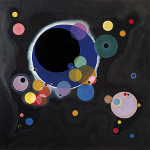Functional neurosurgery in stereotactic conditions includes different procedures: deep brain stimulation, SEEG for epileptic patients, gamma-knife radiosurgery,... that need for millimetric precision and use MRI for planning. For advanced clinical research, it is necessary to offer tools that include the latest methodological advances from the community. Our platform (CENIR STIM “Stereotactic Techniques Images and Models”) aims at building a bridge between researchers and clinicians. We develop tools for stereotaxy in a unified framework.
The software suite is composed of 6 toolboxes, developed in a unified framework: processing pipelines in Python produce datasets (NIFTI, VTK) that are visualized in 3D Slicer through dedicated plugins. Processing uses standard neuroimaging software (FSL, Freesurfer, SPM, Brainvisa) and libraries (nipype, nibabel, VTK/ITK).
1) GeomDist: in stereotactic imaging, sequences must be distortion-free. We have developed a toolbox to evaluate geometric distortions on MR and CT using a phantom.
2) AtlasYEB: a 3D histological atlas of the basal ganglia that can be adapted to any patient through a dedicated deformation.
3) pyDBS: built through a cooperative project, consists of a fully integrated and automated image processing workflow for DBS surgery.
4) EpiLOC: postoperative localization of intra-cranial electrodes implanted on epileptic patients for SEEG procedures. A dedicated plugin allows navigating through the electrodes, in native or MNI space.
5) StereoNav: used to plot stereotactic localization data (SUA or LFP) from groups of patients in a normalized space (defined by the YeB atlas or the MNI template).
6) StereoPrimates: targeting for stereotactic procedures on primates, for injections or electrode implantation.
GeomDist allowed us to optimize MRI parameters to provide distortion-free stereotactic protocols at 1.5 and 3 Tesla (GE and Siemens). pyDBS, using AtlasYEB, is used in our center on a weekly basis, for every DBS patient (pre- and post-op). EpiLOC is used on a monthly basis, for epilecpic patients. StereoNav is used by ICM researchers for neuroscience studies. StereoPrimates has already been tested successfully on three primates.
We have built a modular research software suite for computer-assisted surgery in stereotactic conditions, that addresses several pathologies and procedures. We plan to disseminate this software suite with the DockerHub. We also plan to put all codes available in Github, expecting contributors interested in stereotactic imaging to join us.

 PDF version
PDF version
